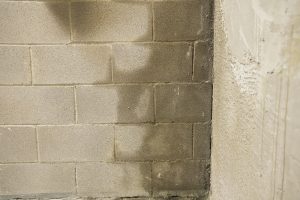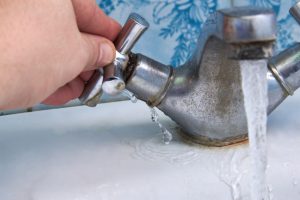How to Detect and Repair Water Leaks in the Bathroom: Expert Advice
How to Detect and Repair Water Leaks in the Bathroom: Expert Advice
Blog Article
This article which follows about How to Check for Bathroom Leaks is truly engaging. Give it a try and draw your own personal final thoughts.

Bathroom leaks are irritating as they interrupt your day's strategy. They vary in seriousness relying on the source of the leakage. You need to prioritize them, as they can swiftly get worse. So, it is an alleviation that most washroom leakages are simple to take care of and identify, with very little price ramifications.
Having a water leak in restroom can be difficult to the home owner. Yet taking care of the leakage becomes a simple issue if you know what to do. So, this write-up is essential as a house overview to repairing a water as well as identifying leakage in shower room. It does not change the demand for professional knowledge. The post works as a "emergency treatment" when you require an emergency situation reaction to a water leakage in washroom.
Discovery and Repair Service of Water Leakage in Restroom
Water leakage in restroom commonly results from pipes and also pipeline mistakes. You may require a fundamental knowledge of these leak types to identify the water leak in bathroom.
Clogged Washroom Sinks
Often, the water leakage in shower room results from sink obstructions. It is simple to deal with blockages, and you might not require specialist abilities.
What to Do
You can utilize a drain serpent to eliminate the particles in the drain as well as allow the stationary water flow. Drain cleansers are also offered in stores and are easy to use. A plunger is additionally valuable in removing your drainpipe. It is an usual household tool and also comes in handy in getting rid of frustrating obstructions in sinks and also drains.
Bathroom Leaks
Sometimes, water leaks from the bathroom and also swimming pools around the commode base. It is an eyesore in the restroom as well as requires punctual focus. Often, it arises from a loosened link in between the storage tank and also the commode. This causes water to drip from the tank to the floor. It might also result from fractures in the toilet bowl or a faulty shut-off shutoff.
What to Do
If there hang bolts between the tank and also commode, you only need to tighten them. Occasionally you may require to reapply wax on the gasket or call in a washroom leakage expert to change worn or damaged parts.
Sprinkle Leaks
These commonly result from water spilling on the washroom floor from the bath tub. It damages the washroom flooring and also might cause rot to wood floorings as well as bathroom doors.
What to Do
If the leak has damaged the washroom flooring or door, you may need to change these to protect against further damage. The great information is that you can include a pipes professional to help with the restroom repair.
Conclusion
Water leakages in the bathroom are avoidable events in the home. Maintenance and routine checks assist to keep everything in tip-top shape. Yet, you can never be also careful, and these events still happen. When they do, repair them quickly, or involve the solutions of a specialist.
The short article serves as a "very first aid" when you need an emergency action to a water leak in shower room.
Water leakage in washroom frequently results from pipes and pipeline faults. You might require a basic knowledge of these leakage types to spot the water leakage in bathroom. Often, the water leakage in washroom results from sink clogs. It damages the restroom floor as well as might cause rot to wooden floorings and also washroom doors.
5 Ways You Can Tell There's Water Leaking In The Bathroom
Mold and mildew
The presence of mold or mildew is a big indicator of a water leak. It's not unordinary to see mold or mildew in parts of your bathroom where water accumulates, like showers and sinks, but it's a problem if you notice it growing in other places. Mold grows in places that are moist and dark so it can point you to hidden water leaks.
Read More: https://www.housedigest.com/927314/ways-you-can-tell-theres-water-leaking-in-the-bathroom/If you notice mold or mildew growing on bathroom walls, floors, or ceilings you should be concerned. Other than pointing you in the direction of a potential leaky pipe behind your walls or under your floors, mold is dangerous to your health, according to The Waterworks. Mold can cause an allergic reaction with symptoms like watery eyes, runny noses, sneezing, headaches, and difficulty breathing. Since mold is not only unsightly to look at, but a health hazard it's important to take care of the leak as soon as possible so the mold can be cleaned before it spreads.
Read More: https://www.housedigest.com/927314/ways-you-can-tell-theres-water-leaking-in-the-bathroom/Damaged walls or floors
Unexplainable damage to your bathroom walls and floors is another sign of water leaking. If drywall gets wet it will crumble, bubble, and even warp or break apart. Before you notice your drywall deteriorating you may see the paint blistering or chipping off the wall. Or if you have wallpaper, it will begin to peel off when wet and show water stains.
Read More: https://www.housedigest.com/927314/ways-you-can-tell-theres-water-leaking-in-the-bathroom/Unstable toilet
When you sit on your toilet does it wobble? If it is unstable your toilet potentially has a flange leak, according to The Pink Plumber. Toilets are supposed to sit stable on the bathroom floor and should never be able to be moved around. There are screws that keep the toilet secured down to the floor and a wax ring that connects the toilet to the waste pipe. The wax ring creates a water-tight seal so nothing leaks when water and waste are moving through the toilet. If the wax seal is damaged or worn down it will no longer provide the proper seal, causing a flange leak and allowing wastewater to seep out.
Read More: https://www.housedigest.com/927314/ways-you-can-tell-theres-water-leaking-in-the-bathroom/Wet bathroom cabinets
Wet bathroom cabinets are a sure-fire way to tell if you have a water leak in your bathroom. When your cabinets are wet it is likely because of leaks from sink faucet or water supply lines. You will know that your cabinets are damp if you see any water stains inside the cabinets. If it is a leak from a water supply line The Pink Plumber explains that you will see water dripping out from the connectors or even puddles in the cabinets.
Read More: https://www.housedigest.com/927314/ways-you-can-tell-theres-water-leaking-in-the-bathroom/https://www.housedigest.com/927314/ways-you-can-tell-theres-water-leaking-in-the-bathroom/

I am just very involved in How to Detect and Fix a Bathroom Leak and I really hope you liked the entry. Be sure to take the opportunity to promote this blog post if you enjoyed it. Thanks so much for taking the time to read it.
Tap problems? Reach. Report this page